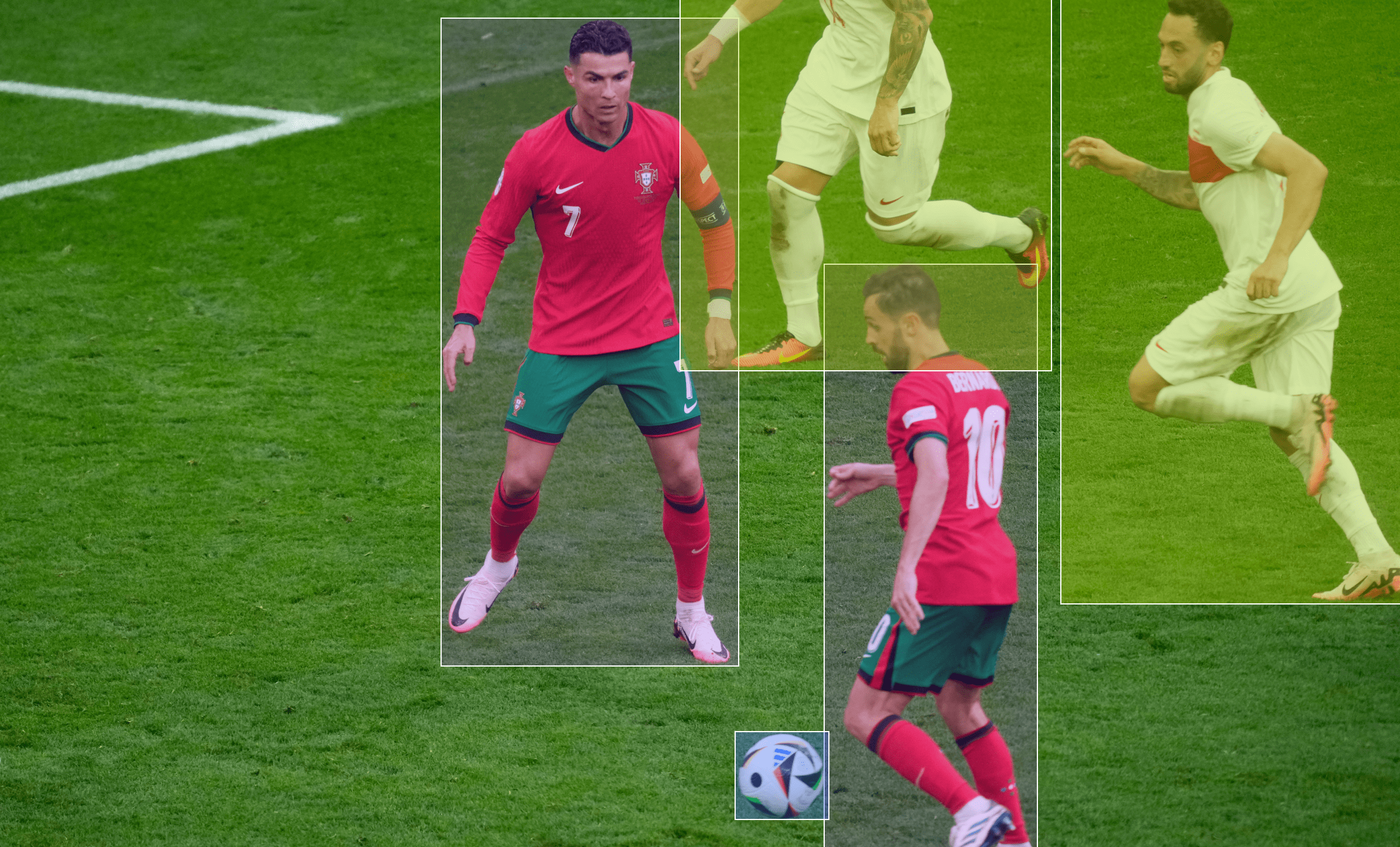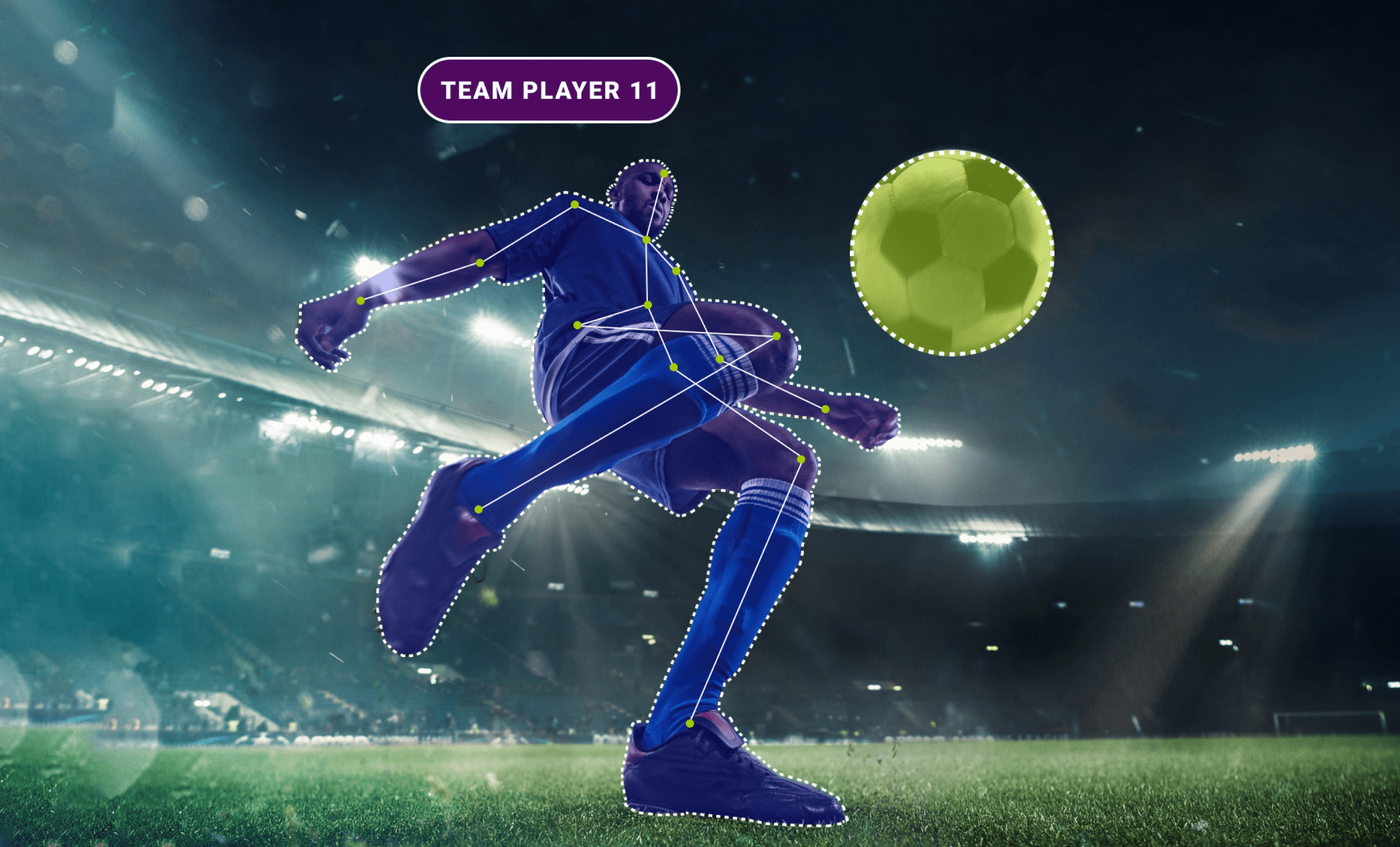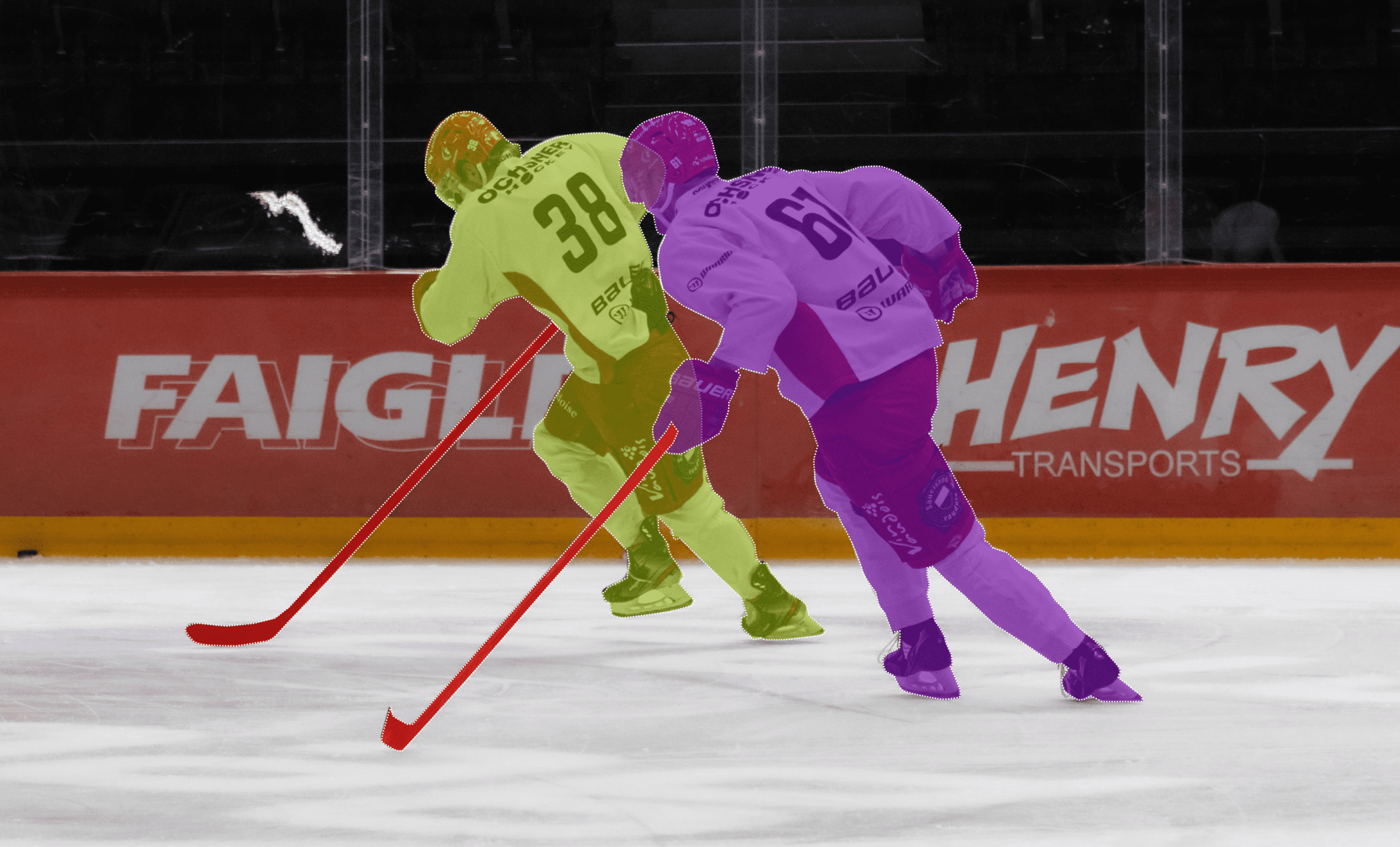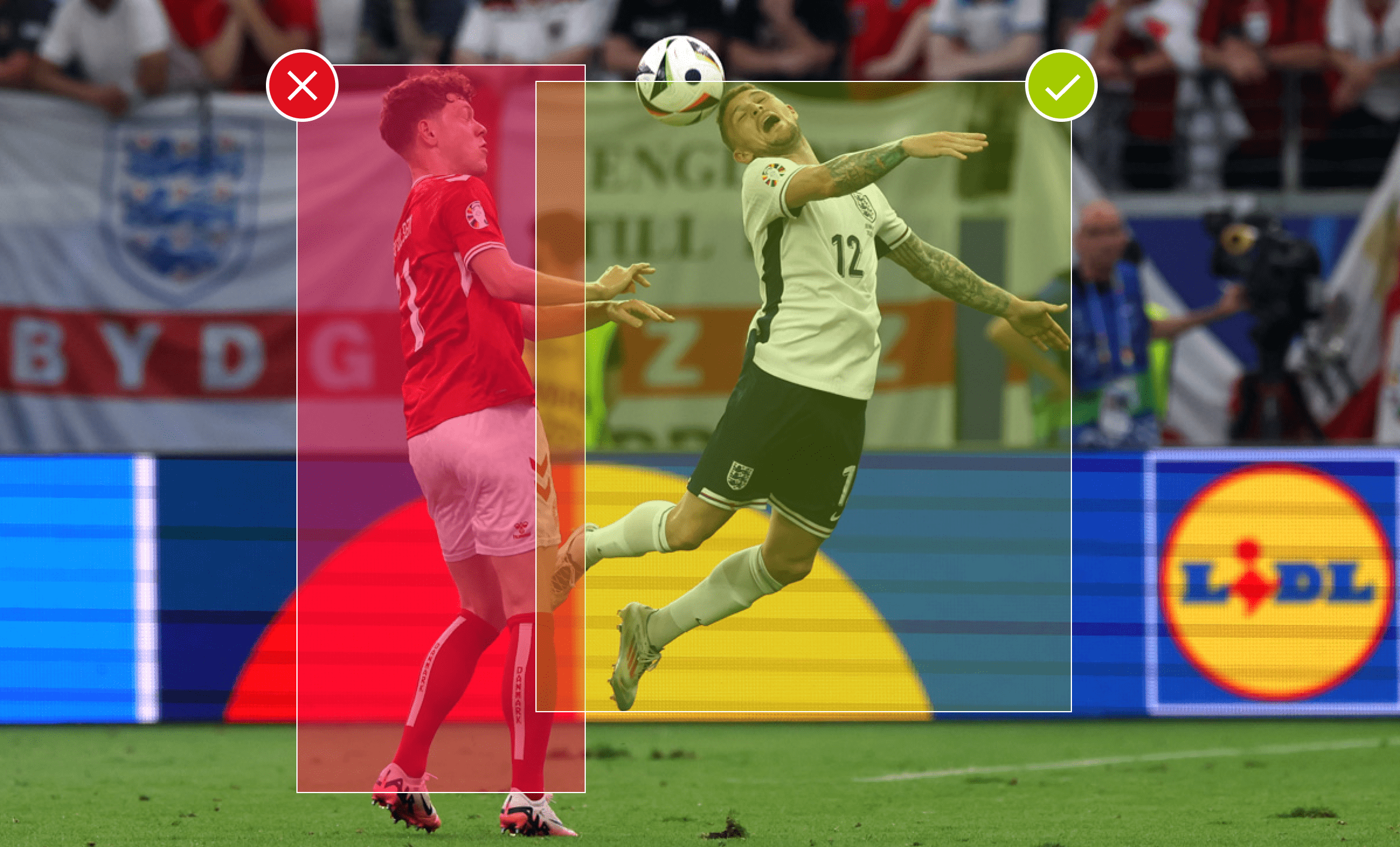Euro 2024: Mastering the Game – Boosting Team Performance with Sport Annotation Insights
Experience the unparalleled excitement of Euro 2024, happening right now! As Europe’s premier football championship unfolds in the heart of Germany, every match brings electrifying moments and jaw-dropping goals. From the thunderous roars of the crowd in Berlin to the vibrant celebrations in Munich, fans are witnessing history in the making. Whether watching from a packed stadium or tuning in from home, the spirit of competition and camaraderie is palpable!
While the world’s best teams are participating in the tournament, have you ever wondered about the tools analysts and coaches used to prepare for the match? Many sports team, not only in soccer, are using AI tools to analyze their matches and these tools rely on data annotation for accuracy. In this article, we will take a look at the role of data annotation in the sports industry and the impact it has on the industry.
How is AI Used by Sports Teams?

In the modern sports arena, AI is revolutionizing how teams analyze matches and enhance performance. Utilizing advanced machine learning algorithms, AI processes vast amounts of data—from player movements and ball trajectories to game strategies and opponent tendencies. This analysis provides coaches with real-time insights and predictive analytics, enabling them to make data-driven decisions during games. AI also helps in identifying patterns and weaknesses that human eyes might miss, leading to more effective training regimens and tactical adjustments. By transforming raw data into actionable intelligence, AI empowers teams to gain a competitive edge and elevate their game to unprecedented levels.
However, as mentioned earlier, high-quality data annotation is needed to ensure the accuracy of the AI systems. In the next section, we will take a look at some of the sports annotation techniques used to prepare the data.
What Types of Data Annotation Techniques are Used in Sports Annotation?

When performing sports annotation tasks, data annotators accurately label key actions, player movements, and game events. This ensures that AI models can effectively interpret and leverage this information, leading to improved decision-making and competitive advantage for sports teams. The following are the most common types of annotations used:
-
Player Tracking– This involves the detailed labeling of players’ movements, positions, and actions within sports footage. While such annotations are a meticulous process, it provides essential data for analyzing performance, developing strategies, and enhancing the accuracy of AI models used in sports analytics and broadcasting.
- Action Identification – Data annotators label video footage with specific actions performed by subjects within the scene. Action identification is necessary for training AI models to recognize and categorize different activities, enabling applications such as video surveillance, sports analysis, and human-computer interaction.
- Player Segmentation – We precisely outline and distinguish individual players from the background and other elements in sports footage. Player segmentation helps companies create training datasets that help AI models accurately identify and track players, analyze movements, and extract detailed performance metrics in various sports applications.
- Player Position Tracking – This involves labeling the precise locations of players on the field or court within each frame of sports footage. Player position tracking is a detailed annotation process that captures the dynamic movements of players, enabling the creation of comprehensive datasets that are needed for training advanced AI models.
- Annotation Validation – This is the process of reviewing and verifying the accuracy and quality of annotated data. This step ensures that the labels applied during the data annotation phase are correct, consistent, and meet the required standards.
Mindy Support Has Extensive Experience With Sports Annotation
Sports annotation certainly presents unique challenges due to the diverse nature of athletic activities and the intricacies of human movement. Our team members have years of experience annotating sports data and are able to overcome any challenges they may encounter during project implementation. They possess deep domain knowledge to accurately label actions such as passes, shots, or fouls across different sports. Therefore, when it comes to sports annotation, we not only talk the talk, but we walk the walk! Below is only a small sample of the sports annotation projects we worked on, and we invite you to learn more about them.

We recently performed 2D bounding box and image annotation for a client in Switzerland to help them enhance the precision and effectiveness of their AI soccer analytics tools. We assembled a team of 8 full-time employees to handle the data annotation tasks, complemented by QA professionals to ensure all annotations were accurately completed. The project was completed with impressive results as we annotated 5,000 images with a quality score of 99%+.

In another project, we assisted our clients, who support professional and junior hockey teams globally, by providing the most comprehensive and evolving advanced analytics in the sport. The company monitors and analyzes numerous game indicators, including players’ ice time, the number of face-offs, puck possession duration, and penalty shots, among others. Over time, much of this work has been automated through AI. Initially, we began with a team of [/BG_GREEN]15 data annotators[/BG_GREEN]. After achieving impressive results, the client expanded the team to 50 annotators. Learn more about our work in our case study.
Quality Assurance in Sports Annotation

Quality assurance in sports annotation is critical for ensuring the accuracy, reliability, and consistency of data used for analysis, coaching, and broadcasting. This process involves multiple layers of verification, including manual reviews by expert annotators and automated checks using sophisticated algorithms. Quality assurance ensures that each action, event, and statistical metric is correctly identified and categorized, reducing the risk of errors that could misinform decisions and analyses.
By maintaining high standards in sports annotation, organizations can enhance the integrity of their data, leading to more effective performance assessments, strategic planning, and viewer engagement. Robust quality assurance protocols also facilitate the integration of annotated data with other technological tools, such as AI and machine learning models, further advancing the capabilities of sports analytics.
Trust Mindy Support With Your Sports Annotation
Mindy Support is a global provider of data annotation services and is trusted by Fortune 500 and GAFAM companies. With more than ten years of experience under our belt and offices and representatives in Cyprus, Ukraine, Poland, Bulgaria, Philippines, India, and Egypt, Mindy Support’s team now stands strong with 2000+ professionals helping companies with their most advanced data annotation challenges.
FAQ
1.What is data annotation in sports, and why is it important?
Data annotation in sports involves labeling and categorizing various elements within sports footage, such as player movements, game events, and specific actions like passes, shots, or fouls. This process is essential for transforming raw video footage into structured data that can be analyzed. Accurate data annotation is crucial for developing insights into player performance, team strategies, and game dynamics. It enables coaches, analysts, and AI systems to make informed decisions, enhancing both the competitive and entertainment aspects of sports.
2. What technologies are commonly used in sports data annotation?
Technologies commonly used in sports data annotation include computer vision, machine learning algorithms, and AI-driven tools. Computer vision helps in automatically detecting and tracking players and objects within the video footage. Machine learning algorithms assist in recognizing and categorizing specific actions and events. Additionally, specialized annotation software allows human annotators to label data efficiently and accurately. Combining these technologies ensures a high level of precision and scalability in the annotation process.
3.How does quality assurance improve the reliability of sports data annotation?
Quality assurance in sports data annotation improves reliability by implementing systematic checks and balances throughout the annotation process. This includes multiple rounds of manual reviews by experienced annotators to catch and correct errors, as well as automated validation procedures to ensure consistency and accuracy.





